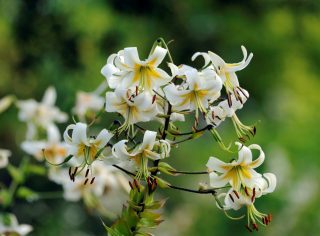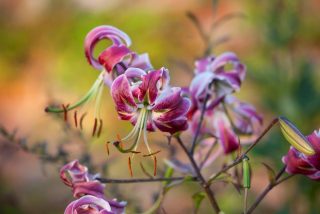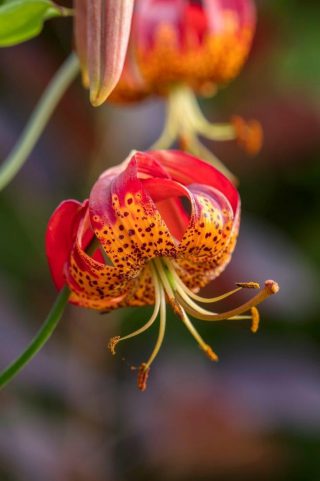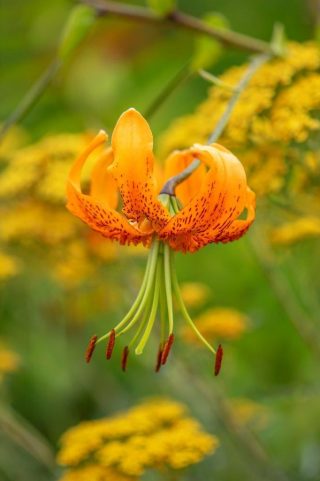Fleur-de-Lis
Lilies are great plants for the middle of summer. Their towering habit makes them eye catchers in any border. Because of their strong features, we use them mainly in the Kitchen Garden where they provide a striking contrast to the ripening produce and add drama to the display. They thrive in our heavy clay soil, and we make sure they get enough moisture. Some varieties grow to a height of over 2 metres, which means that they occasionally need a gentle hand propping them up. We only use Turks cap shape lilies, not oriental types as we find them more elegant. Here are our favourites:





One caveat about lilies is that all parts of the plants are poisonous for cats.
